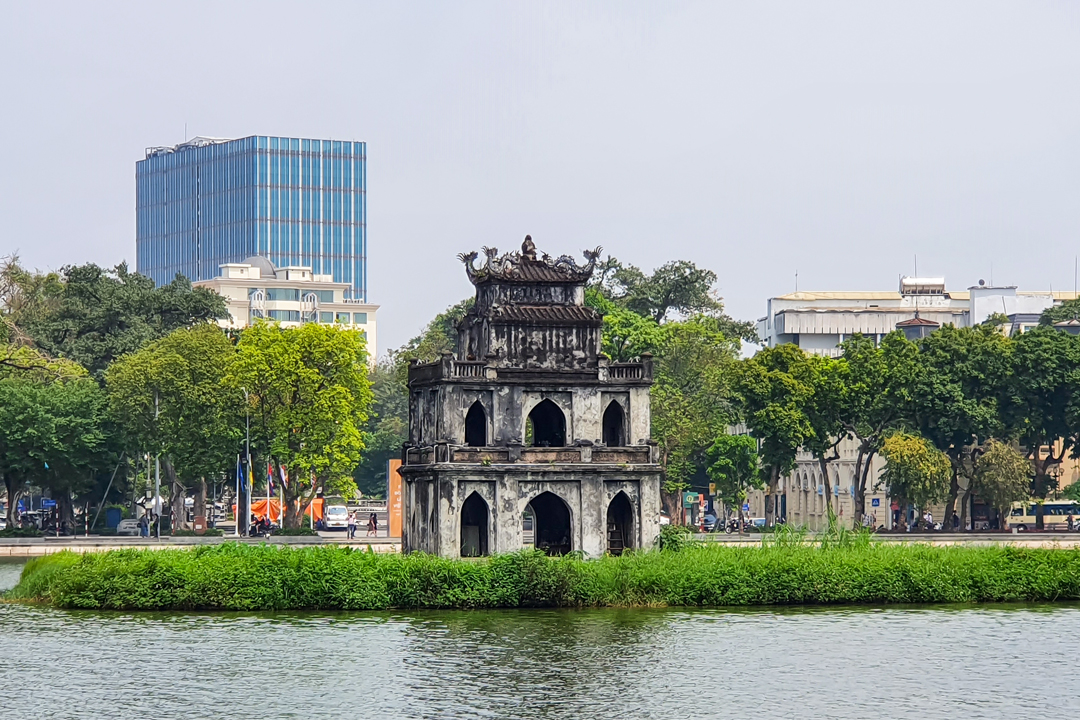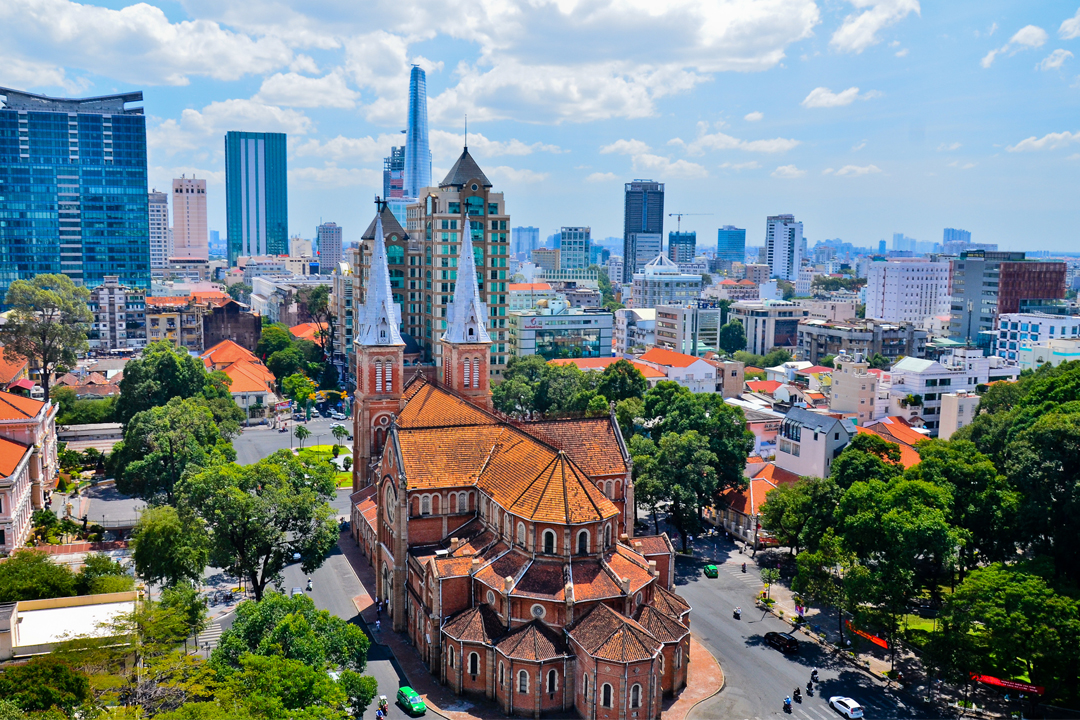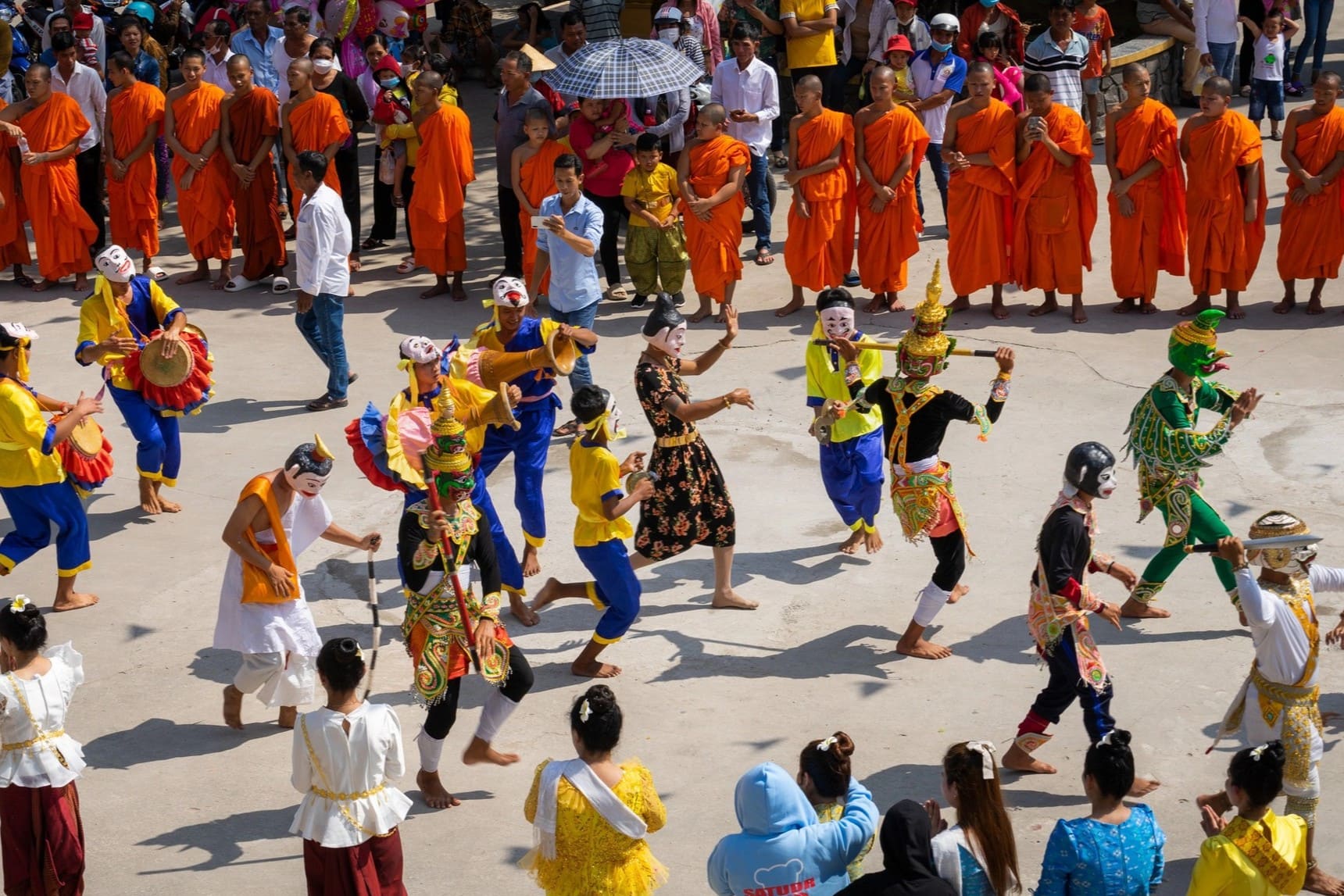Tu Duc Tomb: History, Architecture, Restoration Efforts & Travel Tips
Tu Duc Tomb stands as one of the most remarkable Nguyen Dynasty tombs, reflecting the grandeur and poetic sensibility of Emperor Tu Duc. This historic site, located in Hue Imperial City, offers a glimpse into the emperor’s life, his reign, and the elaborate planning behind his Tu Duc Mausoleum. In this article, GTrip will explore the Tu Duc Tomb's history, its architectural design, and essential travel information for those planning to visit.
As you step into the tomb complex, you are greeted by intricate tomb architecture that seamlessly blends natural landscapes with traditional Vietnamese aesthetics. Key structures such as the Forbidden City of Tu Duc, Tu Duc’s poetry pavilion, and the serene Lotus Pond at Tu Duc Tomb reflect the emperor’s artistic vision and philosophical outlook. However, the tomb is not just an architectural marvel; it has undergone various Tu Duc Tomb restoration initiatives to preserve its historical integrity as a UNESCO heritage site in Hue.
For those planning a visit, knowing the best time to visit Tu Duc Tomb is crucial for an optimal experience. Seasonal changes influence the scenery and photography spots, making certain months more ideal than others. Travelers will also find practical insights on Tu Duc Tomb's location and transportation options and a complete Tomb of Tu Duc travel guide to ensure a smooth journey. Additionally, details on the Tu Duc Tomb entrance fee, ticket prices, and opening hours will help in planning the itinerary efficiently.
Beyond the tomb itself, Hue offers a wealth of Tu Duc Tomb nearby attractions, including the renowned Hue Imperial City and other historically significant sites. Tourists can immerse themselves in the region’s rich past while exploring the best places to visit in Hue. This guide also addresses frequently asked questions, such as the historical importance of Tu Duc’s Mausoleum and the ideal duration for a visit. Let's dive into the full Tu Duc Tomb trip with GTrip.
History of Tu Duc Tomb
The history of Tu Duc Tomb is deeply intertwined with the life and reign of Emperor Tu Duc, the longest-serving ruler of the Nguyen Dynasty tombs. Built between 1864 and 1867, this grand mausoleum is a burial site and also a reflection of the emperor’s philosophy, personal struggles, and artistic sensibilities.
The life and reign of Emperor Tu Duc
Emperor Tu Duc ruled from 1847 to 1883, a period marked by internal conflicts and increasing pressure from Western colonial forces. He was known for his deep knowledge of literature, poetry, and Confucian philosophy, which heavily influenced the design of his tomb. Unlike previous emperors who prioritized military expansion, Tu Duc focused on preserving Vietnamese traditions and resisting foreign influence. However, his reign was also fraught with controversy, including opposition from court officials and the forced labor used in constructing the tomb.
The Emperor’s personal struggles played a key role in shaping his mausoleum. Tu Duc suffered from a chronic illness and was unable to have children, which led him to pour his emotions into poetry and calligraphy. His tomb complex includes a poetry pavilion where he often retreated to reflect on his solitude and mortality.
The significance of the Tu Duc Tomb in Vietnamese heritage
Tu Duc Tomb is one of the most significant imperial tombs in Vietnam, embodying the grandeur and philosophy of Emperor Tu Duc. Located in Hue, this tomb is not merely a burial site but a vast complex that served as both a retreat for the emperor during his lifetime and his final resting place. Built between 1864 and 1867, the tomb reflects traditional Vietnamese architecture, infused with Confucian and Buddhist influences, and showcases the emperor’s refined artistic vision. Originally, the mausoleum was called Van Nien Con. Later, it was renamed Khiem Cung. After the king passed away, it was renamed the Khiem Lang.
As a symbol of imperial power, Tu Duc’s tomb demonstrates his authority and personal tastes. Unlike other Nguyen Dynasty tombs, this site was designed not just for burial but also as a place for the emperor to meditate, compose poetry, and escape the pressures of ruling. The tomb complex includes lakes, gardens, and pavilions, arranged according to feng shui principles to create harmony between nature and human-made structures. The Xung Khiem Pavilion, where Tu Duc wrote poetry, and the Luu Khiem Lake, surrounded by lush scenery, are key elements of this grand yet peaceful design.
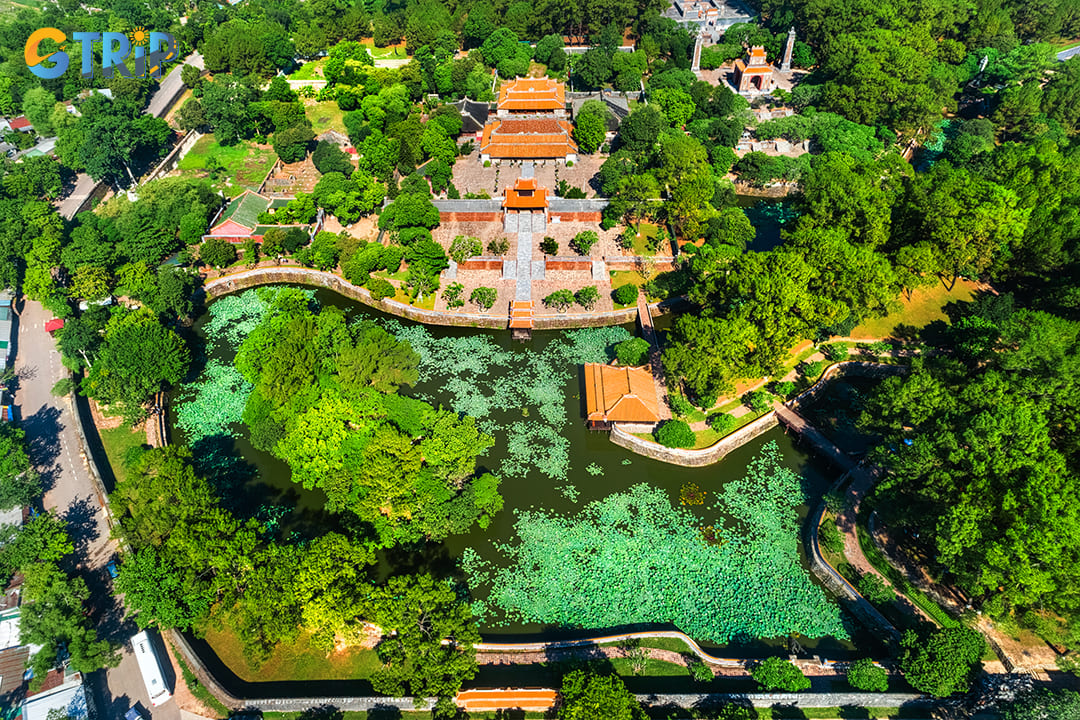
Tu Duc Tomb is one of the most significant imperial tombs in Vietnam, embodying the grandeur and philosophy of Emperor Tu Duc
Philosophically, the tomb reflects Tu Duc’s introspective nature and personal struggles. He ruled during a turbulent time, facing internal conflicts and increasing pressure from French colonial forces. Additionally, as he had no direct heir, themes of loneliness and contemplation are embedded in the tomb’s design. This melancholic yet majestic complex offers deep insight into the emperor’s thoughts on life and mortality.
Beyond its historical and cultural significance, Tu Duc Tomb is also an architectural marvel. Spanning 12 hectares, the complex includes temples, shrines, and the Khiem Cung Gate, each element carefully crafted to reflect imperial aesthetics. The grandeur of the tomb contrasts with the hardships Tu Duc faced during his reign, making it a poignant representation of his rule.
Architectural design of Tu Duc Tomb
The architectural design of Tu Duc Tomb reflects the elegance and grandeur of the Nguyen Dynasty, blending traditional Vietnamese aesthetics with classical Chinese influences. The tomb complex, spanning approximately 12 hectares, was meticulously planned as a serene retreat rather than a conventional burial site. Emperor Tu Duc, known for his refined literary taste, personally oversaw its construction, ensuring that its layout embodied his poetic and philosophical ideals.
The tomb consists of nearly 50 structures spread across both the residential and burial areas. Notably, all of these structures include the word “Khiem”, which means humility and respect, a virtue highly regarded by Confucian scholars of the time. The entire complex is divided into two main sections: the temple area and the tomb area. These sections are arranged parallel to each other, with Giang Khiem Mountain in front as a natural screen, Duong Xuan Mountain at the back as a protective barrier, and Luu Khiem Lake as the central element of harmony.
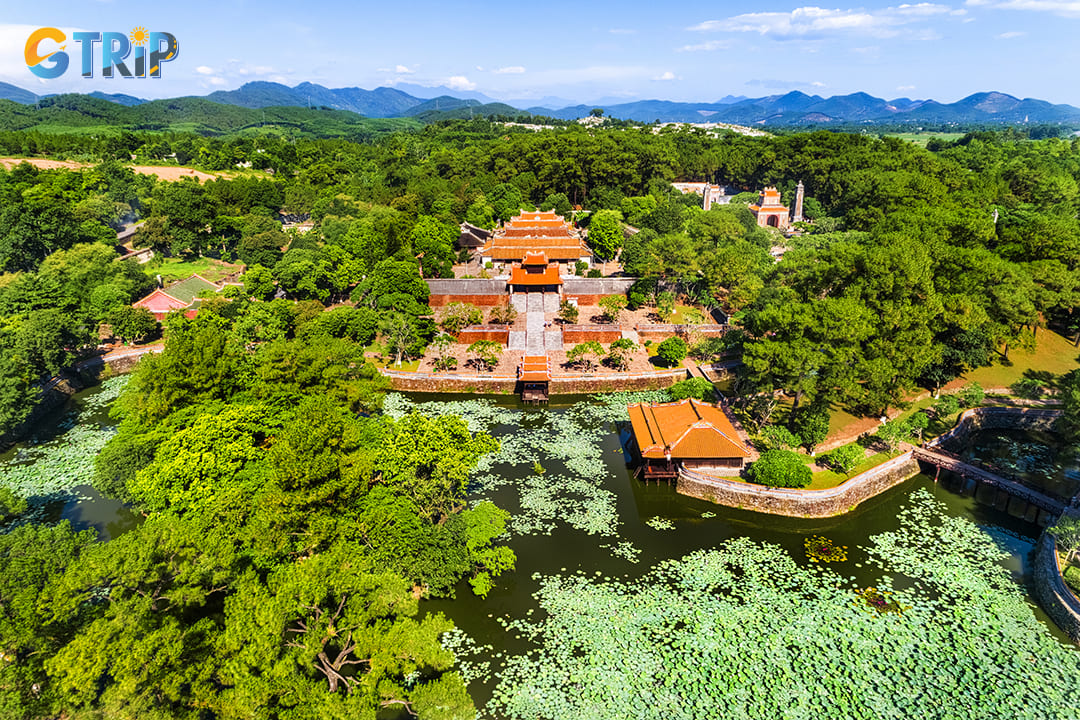
The architectural design of Tu Duc Tomb reflects the elegance and grandeur of the Nguyen Dynasty
Here are 5 key sections of Tu Duc Tomb:
- Khiem Cung Mon
Khiem Cung Mon is a two-story pavilion-style gate, serving as the resting place for the emperor whenever he visited the tomb. At its center is Hoa Khiem Palace, flanked by Phap Khiem Vu on the left and Le Khiem Vu on the right.
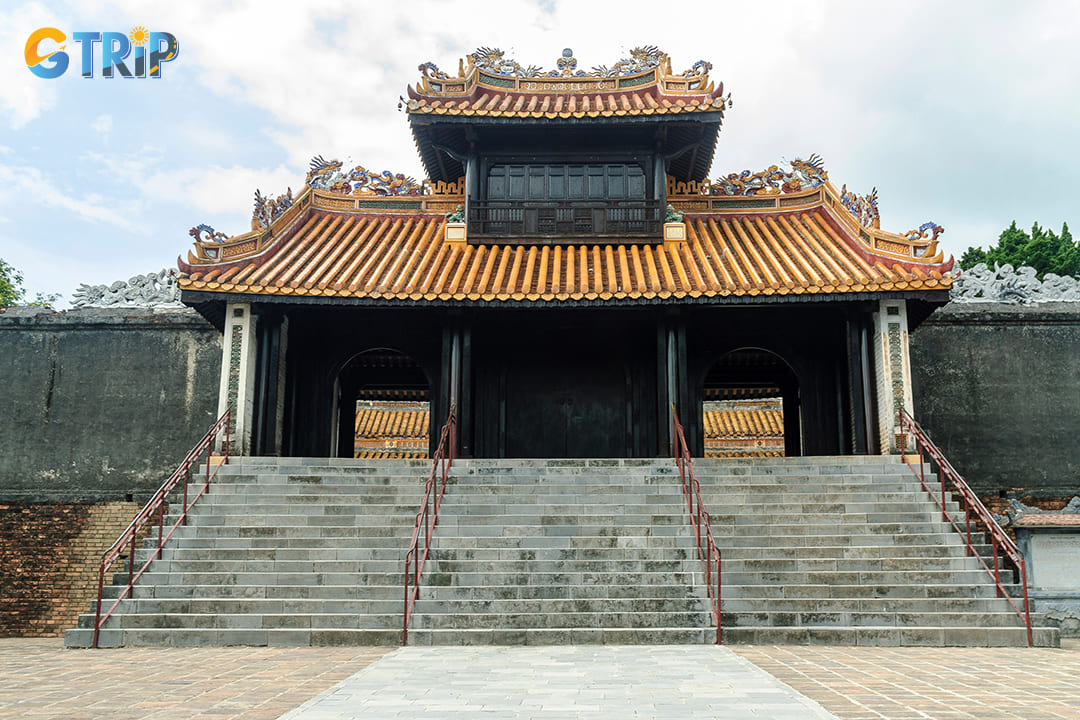
This is Khiem Cung Mon
- Luong Khiem Palace
Located behind Hoa Khiem Palace, this structure now serves as a shrine dedicated to Empress Dowager Tu Du, Tu Duc’s mother. To its right is On Khiem House, which stores the emperor’s personal belongings and artifacts from the past.
- Minh Khiem Theater
To the left of Luong Khiem Palace is Minh Khiem Theater, where the emperor enjoyed performances. Today, it is regarded as one of the oldest surviving theaters in Vietnam, offering valuable insights into the Nguyen Dynasty’s cultural and artistic heritage.
- Tinh Khiem Island
Nestled in the middle of Luu Khiem Lake, Tinh Khiem Island exudes a tranquil and romantic ambiance. This area was used for growing flowers and housing rare animals. Surrounding the island are Xung Khiem Pavilion and Du Khiem Pavilion, where the emperor would write poetry, read books, and admire the scenery.
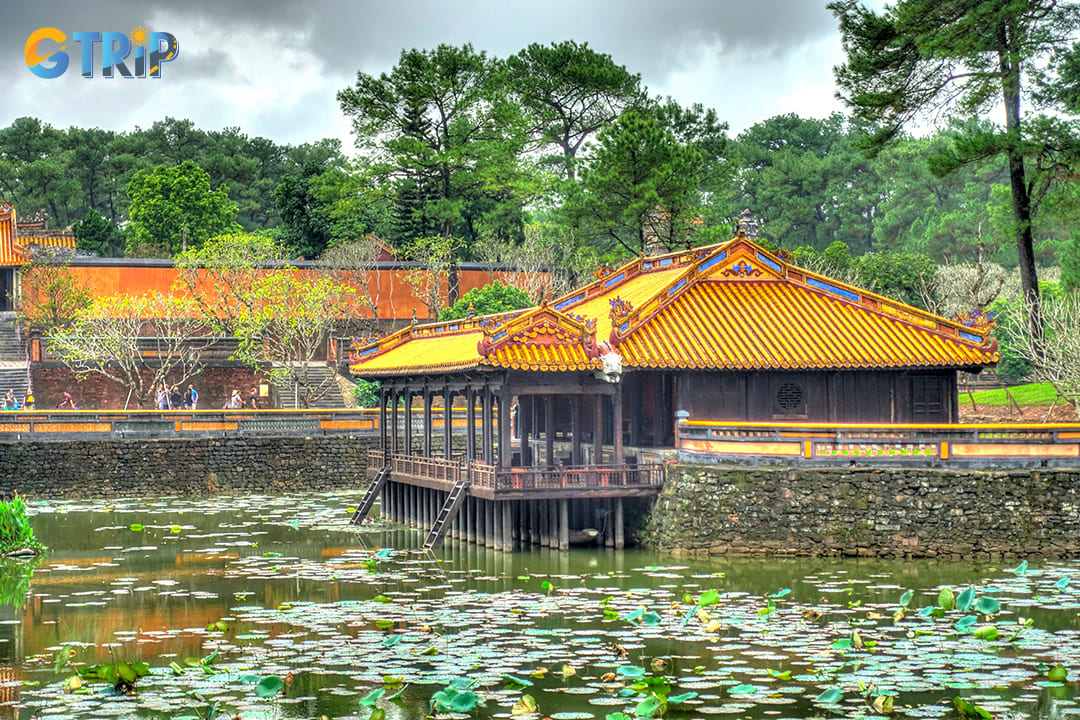
The poetic lotus pond scene at Luu Khiem Lake
- The Tomb Area
Leaving the Temple Area, tourists follow a path leading to the Tomb Area. At Bai Dinh Courtyard, you will see two rows of stone statues of mandarins, elephants, and horses, symbolizing loyalty and protection. Behind them stands Bi Dinh Pavilion, which houses a 20-ton stone stele inscribed with Khiem Cung Ky, an autobiography written by Emperor Tu Duc himself, reflecting on his turbulent and sorrowful life.
The tomb’s distinctive architectural style makes it one of Hue’s most captivating historical sites, standing near landmarks like Khai Dinh Tomb. The tomb showcases a contrasting blend of Western and Eastern influences. As preservation efforts continue, ensuring the integrity of this cultural masterpiece remains a priority. In the next section, we will explore the restoration efforts and conservation projects dedicated to maintaining the tomb’s historical significance.
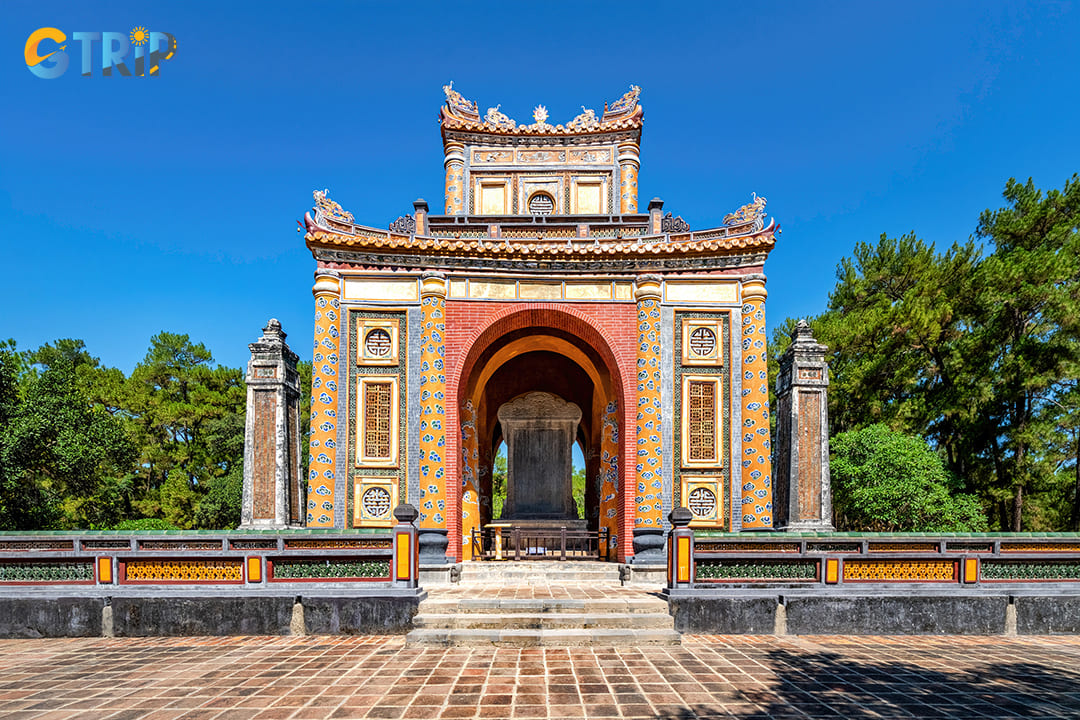
Bi Dinh Pavilion houses a 20-ton stone stele inscribed with Khiem Cung Ky, an autobiography written by Emperor Tu Duc himself
Restoration efforts and conservation of Tu Duc Tomb
The Tu Duc Tomb restoration plays a crucial role in preserving one of Vietnam’s most significant historical and cultural landmarks. As a key component of UNESCO Heritage Hue, the tomb faces challenges such as natural degradation, weathering, and human impact. Over the years, multiple initiatives have been undertaken to maintain the structural integrity and historical authenticity of this royal mausoleum.
To preserve and promote this historic site, the Thua Thien Hue People's Committee approved a restoration project for Tu Duc Tomb. The project aims to restore and enhance various structures within the tomb complex. It has a total investment of nearly 100 billion VND. According to the Hue Monuments Conservation Center, the project will focus on the restoration and renovation of several structures, including:
- Hoa Khiem Palace
- Minh Khiem Theater
- On Khiem House
- La Thanh Wall, Vu Khiem Gate, and the screen in front of Vu Khiem Gate
- Infrastructure improvements within the tomb complex
The project has already commenced, with some structures dismantled for restoration work. The renovation is expected to be completed by October 2027.
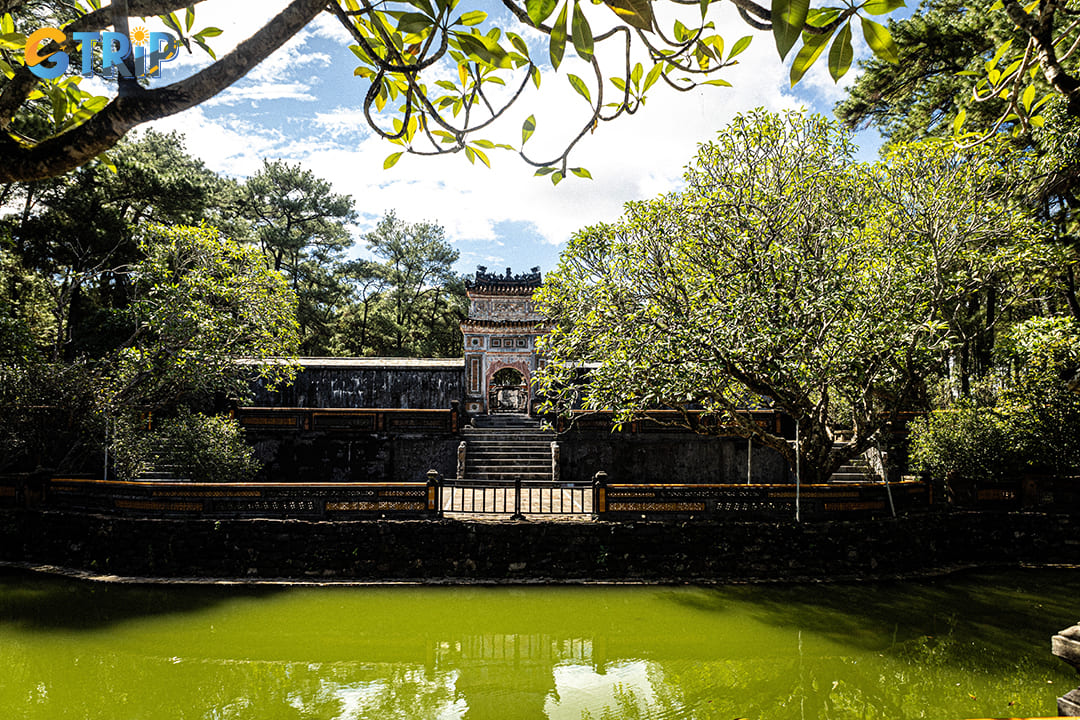
The Tu Duc Tomb restoration plays a crucial role in preserving one of Vietnam’s most significant historical and cultural landmarks
Things to do at Tu Duc Tomb
Tu Duc Tomb is not only a royal resting place but also a masterpiece of Nguyen Dynasty architecture, blending natural beauty with traditional design. These activities will offer a complete experience of the site’s history, culture, and scenic charm.
1. Learning the inscriptions at the Bi Dinh Pavilion
A visit to the Bi Dinh Pavilion offers a rare glimpse into Emperor Tu Duc’s introspective nature. Unlike other monarchs, who had their achievements praised by others, Tu Duc wrote his own epitaph, acknowledging both his successes and failures. The pavilion houses a massive stone stele weighing over 20 tons, carved with classical Chinese characters. The inscriptions reveal Tu Duc’s reflections on his reign, personal hardships, and regrets, particularly his inability to produce an heir. This candid self-assessment sets Tu Duc apart from other rulers of the Nguyen Dynasty.
As you stand before the stele, imagine the skilled artisans who carved these characters by hand, preserving the emperor’s words for future generations. The pavilion’s open design allows natural light to illuminate the inscriptions, making it a striking spot along the Tu Duc Tomb walking route.
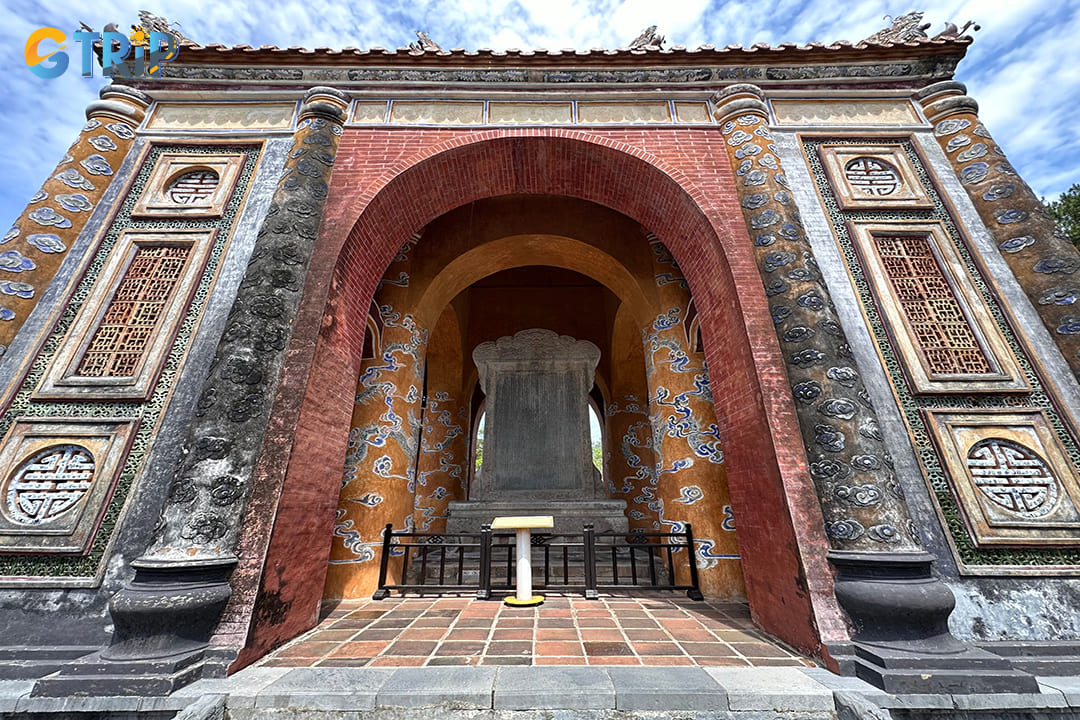
A visit to the Bi Dinh Pavilion offers a rare glimpse into Emperor Tu Duc’s introspective nature
2. Relax at Xung Khiem Pavilion by the Lotus Pond
Xung Khiem Pavilion is a wooden structure overlooking a tranquil lotus pond, where Emperor Tu Duc often retreated to write poetry, read books, and enjoy traditional music. This serene setting reflects the emperor’s appreciation for nature and the arts, offering a peaceful escape from the demands of royal life.
Surrounded by lush greenery and blooming lotus flowers in summer, the pavilion is one of the most picturesque Tu Duc Tomb photography spots. The calm water reflects the pavilion’s elegant architecture, creating a mirror-like effect that photographers love. The pond is also home to koi fish and aquatic plants, adding to the natural beauty of the scene.
You can sit inside the pavilion and imagine the emperor composing verses while gazing at the water. During your visit, take a moment to appreciate the craftsmanship of the wooden pillars, beams, and roof tiles, all carefully designed to harmonize with the surrounding landscape.
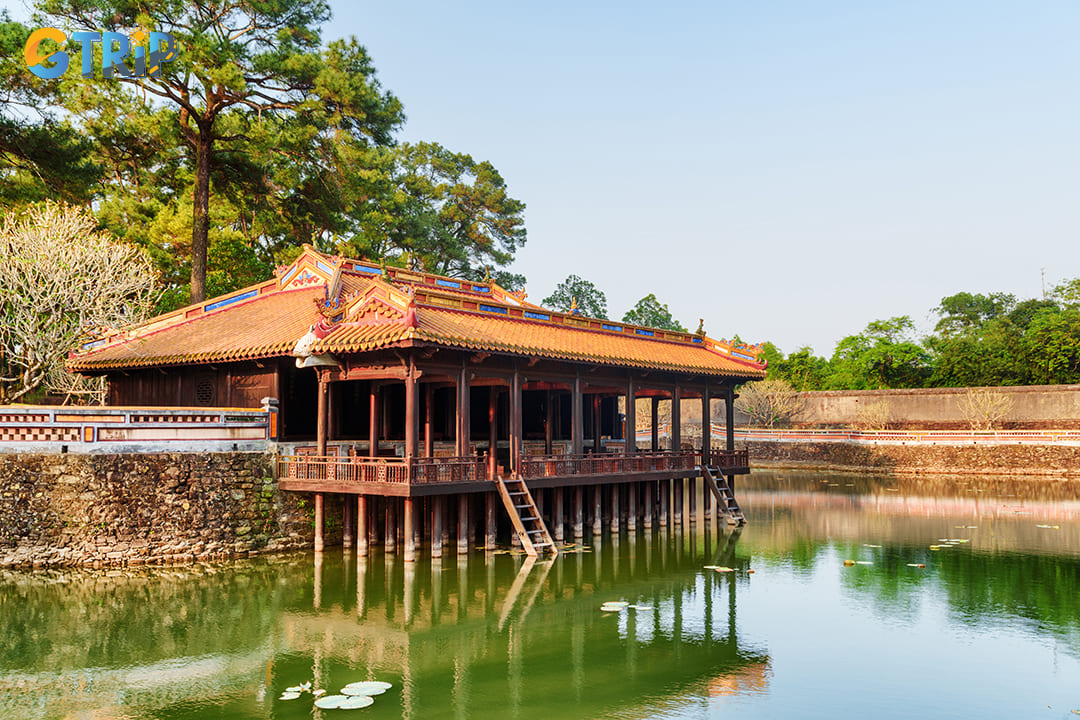
Xung Khiem Pavilion is a wooden structure overlooking a tranquil lotus pond
3. Experience the cool and serene atmosphere
Tu Duc Tomb is enveloped by a lush canopy of trees, creating a refreshing and peaceful retreat. The site not only embodies the imperial grandeur of a Nguyen Dynasty emperor but also carries an unexpected poetic and romantic charm. Walking through the tomb complex, you can enjoy the crisp, fresh air and admire the harmonious blend of mountains, lakes, and historic architecture. The gentle rustling of leaves and the reflection of ancient pavilions on the water enhance the tranquil atmosphere, making it a perfect escape from the city’s hustle and bustle.
Adding to its charm, the tomb is situated near Vong Canh Hill, a scenic spot known for its panoramic views of Hue’s natural beauty. Overlooking the Perfume River, this area offers a stunning fusion of forests, rolling hills, and calm waters, creating an ideal setting for relaxation. Many tourists take the opportunity to sit by the lake, reflect on history, or simply embrace the peaceful surroundings.
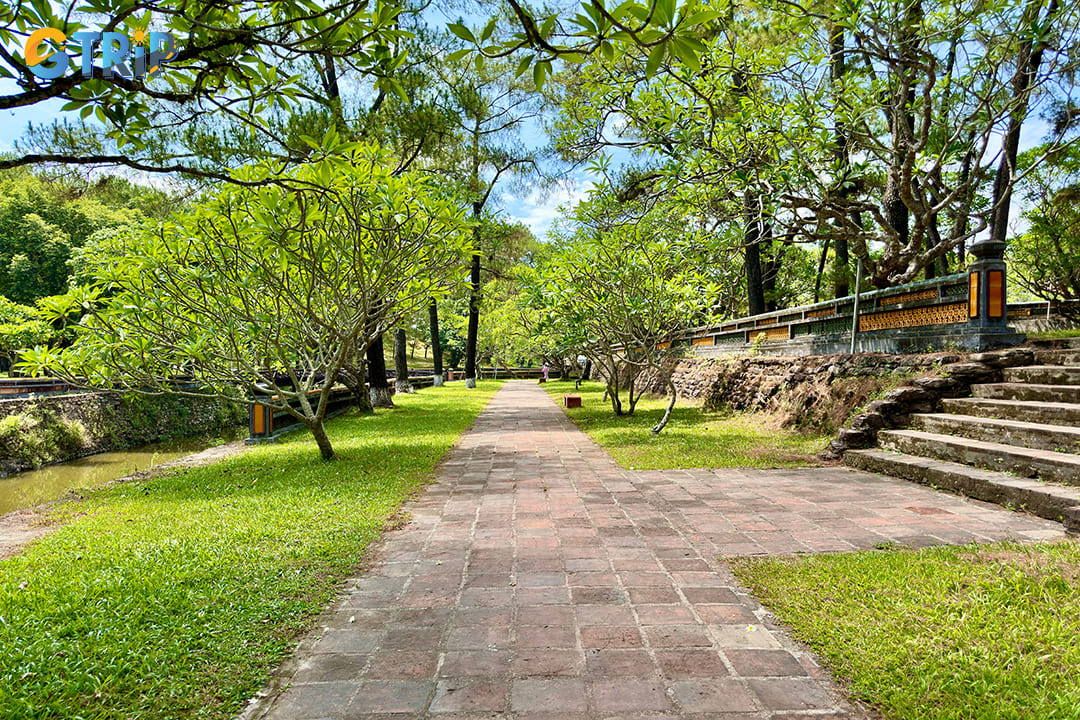
Tu Duc Tomb is enveloped by a lush canopy of trees, creating a refreshing and peaceful retreat
4. Capture timeless moments in an ancient setting
Tu Duc Tomb is a paradise for those who love photography and cultural experiences. With its traditional Vietnamese architecture, poetic landscapes, and intricate carvings, the tomb offers countless picturesque spots for people to capture stunning heritage-style photos. Every corner exudes a sense of imperial elegance and historical charm, such as the majestic Khiem Cung Gate, the serene Luu Khiem Lake, or the ancient stone pathways.
The moss-covered walls, wooden pavilions, and tranquil courtyards create the perfect backdrop for traditional-inspired photoshoots. Many tourists choose to wear Vietnamese ao dai or historical costumes to fully embrace the regal atmosphere of the Nguyen Dynasty era. Tu Duc Tomb offers an enchanting setting for unforgettable memories with various unique “check-in” spots.
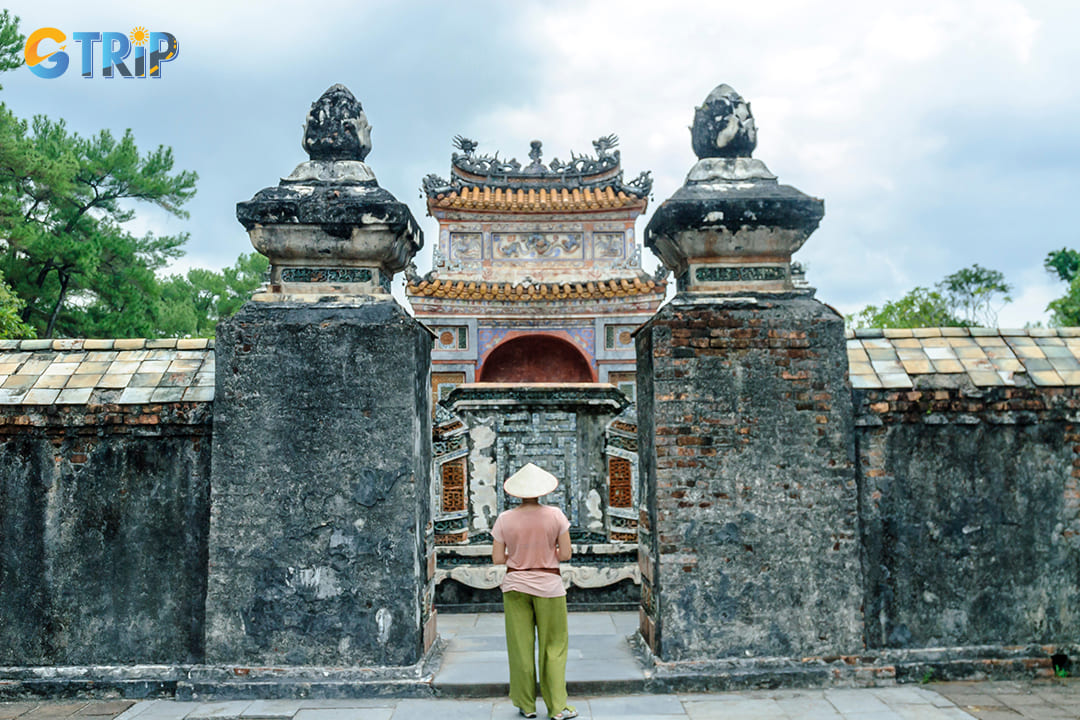
Tu Duc Tomb is a paradise for those who love photography and cultural experiences
How to get to Tu Duc Tomb?
Located just 6 kilometers southwest of Hue’s city center, Tu Duc Tomb is easily accessible by various transportation options.
1. By motorbike or bicycle
For travelers who enjoy flexibility, renting a motorbike or bicycle is a great way to explore Hue at your own pace. Many rental shops in the city offer affordable daily rates. From the center of Hue, follow Dien Bien Phu Street, then take Le Ngo Cat Street to reach the Tu Duc Tomb. The ride takes about 15 - 20 minutes, passing by local villages and scenic rice fields.
2. By taxi or ride-hailing services
For a more convenient option, taxis and ride-hailing apps like Grab are widely available in Hue. The fare from the city center to Tu Duc Tomb ranges from 80,000 to 150,000 VND, depending on traffic conditions. This option is ideal for those who prefer a hassle-free journey with air-conditioned comfort.
3. By cyclo or private tour
Hue is known for its traditional cyclos, offering a unique and leisurely way to explore the city. While a cyclo ride might take longer (around 40 minutes), it provides a relaxing experience as you soak in the historical atmosphere of Hue. Alternatively, booking a private Hue tour can include Tu Duc Tomb along with other imperial sites like Khai Dinh Tomb, making your trip more structured and informative.
4. By local bus
Budget-conscious travelers can take Bus No. 5 from the city center, which stops near the Tu Duc Tomb entrance. Although the journey may take longer than other options, it’s an affordable way to experience Hue like a local.
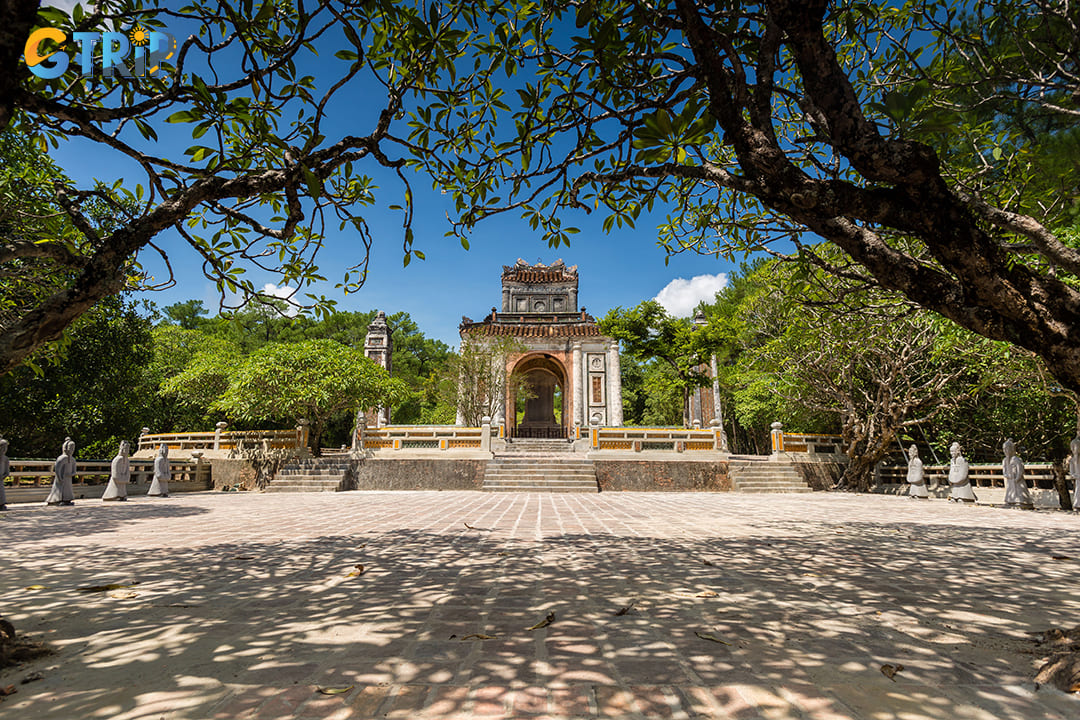
Tu Duc Tomb is easily accessible by various transportation options
Tu Duc Tomb entrance fee and visiting hours
Visiting Tu Duc Tomb requires an entrance fee, which varies depending on the ticket type and visitor category. As of the latest update, the Tu Duc Tomb ticket price for Vietnamese adults is 100,000 VND, while children under 12 years old enjoy a reduced fee of around 20,000 VND. The ticket price for foreigners is 150,000 VND.
The Tu Duc Tomb's opening hours are from 6:30 AM to 5:00 PM in summer and 7:00 AM to 5:00 PM in winter. It is accessible for both early risers and those who prefer a more leisurely visit in the afternoon. However, the best time to explore the tomb is in the morning or late afternoon when the temperature is cooler, allowing for a more comfortable experience. Since Hue’s weather can be unpredictable, checking the forecast before planning a visit is advisable.
To ensure a smooth visit, tourists should follow certain regulations within the complex. Photography is allowed in most areas, but the inner sanctum may have restrictions. Tourists are encouraged to dress modestly, as the tomb is a place of historical and cultural significance. Additionally, maintaining silence and respecting the heritage site is essential to preserving its tranquil atmosphere.
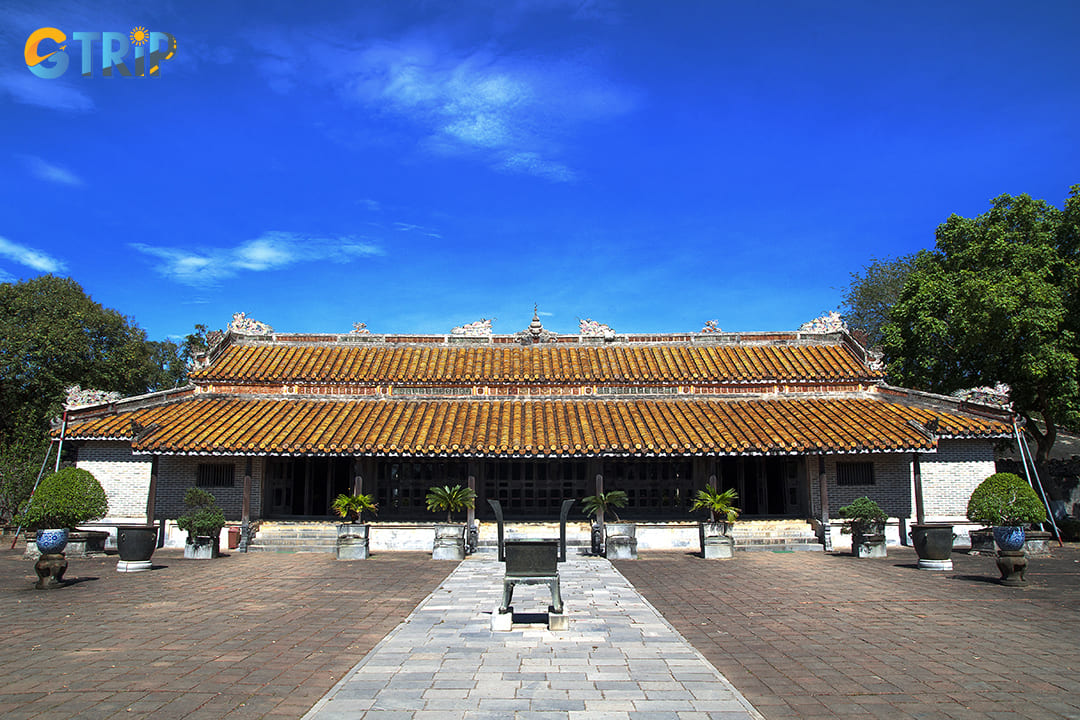
Visiting Tu Duc Tomb requires an entrance fee, which varies depending on the ticket type and visitor category
Nearby attractions to explore Hue cultural heritage
Exploring Tu Duc Tomb's nearby attractions allows tourists to dive deeper into Hue’s rich imperial history and cultural heritage. The surrounding area is home to several must-visit sites that offer unique insights into Vietnam’s royal past and traditional artistry.
Thuy Xuan Incense Village
One of the most colorful stops near Tu Duc’s Mausoleum is Thuy Xuan Incense Stick Village. This traditional craft village is famous for its vibrant, hand-rolled incense sticks, which are made using age-old techniques passed down through generations. Walking through the village, you can observe artisans skillfully shaping incense and arranging it in bright, fan-like displays. Besides incense, the village also offers handmade conical hats, making it a perfect spot for picking up authentic souvenirs.
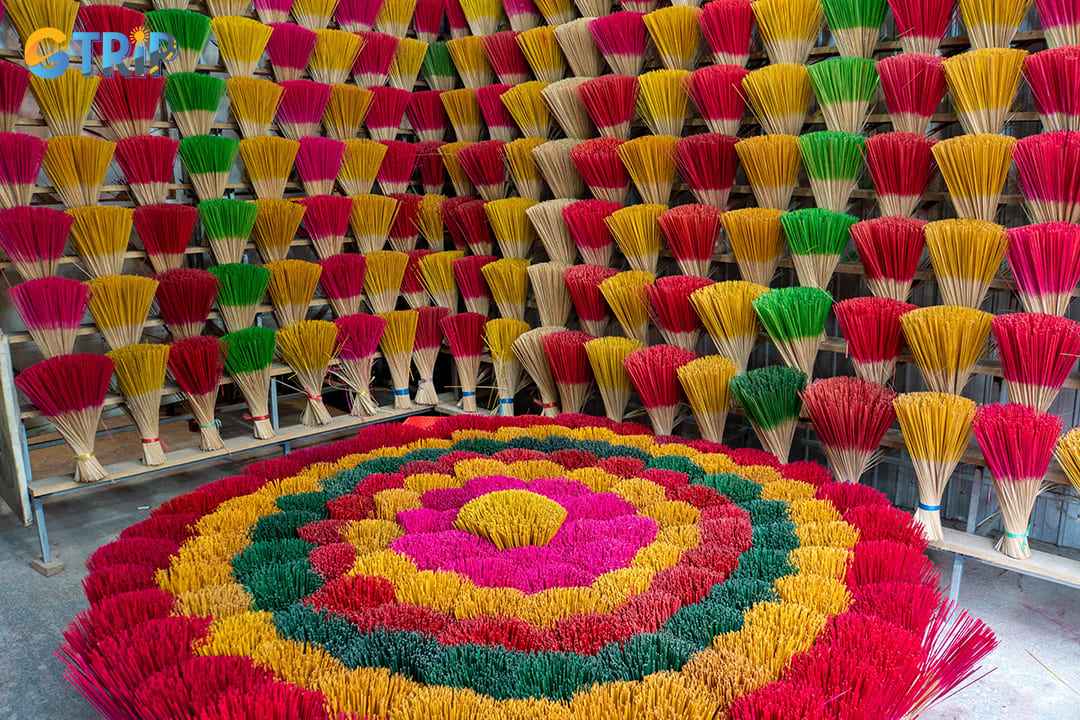
One of the most colorful stops near Tu Duc’s Mausoleum is Thuy Xuan Incense Stick Village
Khai Dinh Tomb
For those fascinated by imperial history, Khai Dinh Tomb presents a stark contrast to the serene and poetic Tu Duc Tomb. Built for Emperor Khai Dinh, this mausoleum is renowned for its fusion of Eastern and Western architectural influences. You will be captivated by its intricate mosaic decorations, elaborate dragon carvings, and European-inspired elements. They reflect a shift in royal architectural preferences during the early 20th century. Unlike Tu Duc’s sprawling natural landscape, Khai Dinh Tomb features a grand staircase, stone statues, and an opulent burial chamber. This makes it a fascinating destination for those interested in Vietnam’s evolving architectural styles.
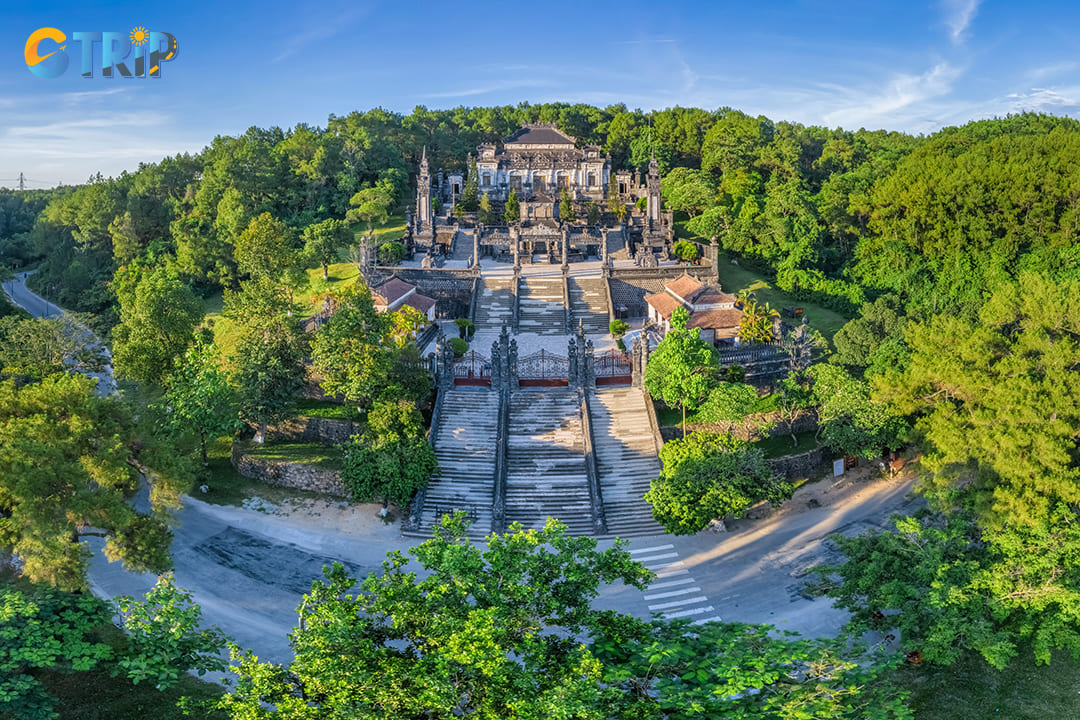
Built for Emperor Khai Dinh, this mausoleum is renowned for its fusion of Eastern and Western architectural influences
Hue Imperial City
A visit to Hue is incomplete without exploring the Hue Imperial City (Imperial Citadel of Hue), the former political and cultural hub of the Nguyen Dynasty. This vast citadel, recognized as a UNESCO World Heritage Site, houses ancient palaces, temples, and the Forbidden Purple City, once reserved for the royal family. Walking through its grand gates and historic corridors, you gain a deeper understanding of Vietnam’s last ruling dynasty while admiring the blend of traditional Vietnamese and French colonial influences. The complex is best explored on foot, allowing travelers to absorb its rich history at a leisurely pace.
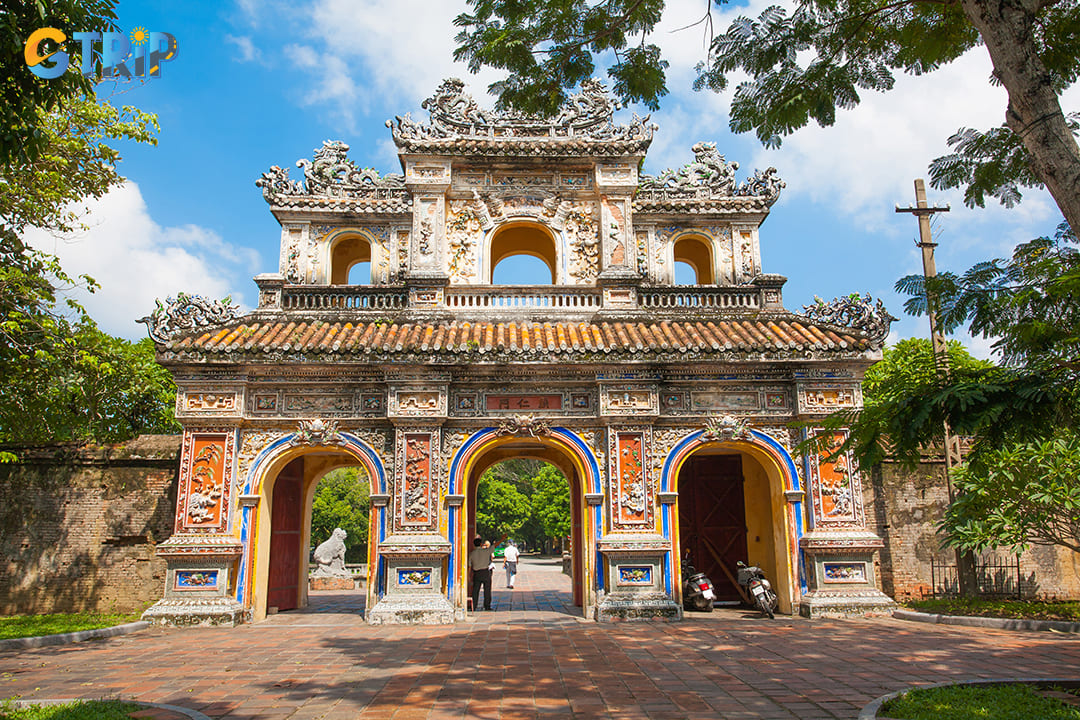
A visit to Hue is incomplete without exploring the Hue Imperial City
Frequently Asked Questions (FAQs)
1. Can I take photos inside Tu Duc’s Mausoleum?
Photography is allowed in most areas of the tomb complex, but you should be mindful of certain restrictions. While capturing the Lotus Pond at Tu Duc Tomb and its scenic landscape is encouraged, some interior spaces, particularly sacred altars, may have signage prohibiting flash photography.
2. Are there any guided tours available at Tu Duc Tomb?
Yes, both private and group guided tours are available for people seeking in-depth knowledge of Tu Duc Tomb history. These tours often include insights into the emperor’s life, the symbolic meaning of the tomb’s design, and stories of palace intrigue. For a more immersive cultural experience, many itineraries combine Tu Duc Tomb with other attractions. Booking a knowledgeable guide enhances the understanding of this UNESCO-listed heritage site.
3. What makes Tu Duc Tomb unique compared to other Nguyen Dynasty Tombs?
Unlike the grandiose and Western-influenced Khai Dinh Tomb, Tu Duc Tomb is a masterpiece of traditional Vietnamese architecture, harmonizing with nature rather than imposing upon it. The complex features an extensive landscape of lakes, gardens, and pavilions, reflecting the poetic soul of Emperor Tu Duc. The Tu Duc’s poetry pavilion, in particular, highlights his love for literature, setting his tomb apart as both a mausoleum and a retreat.
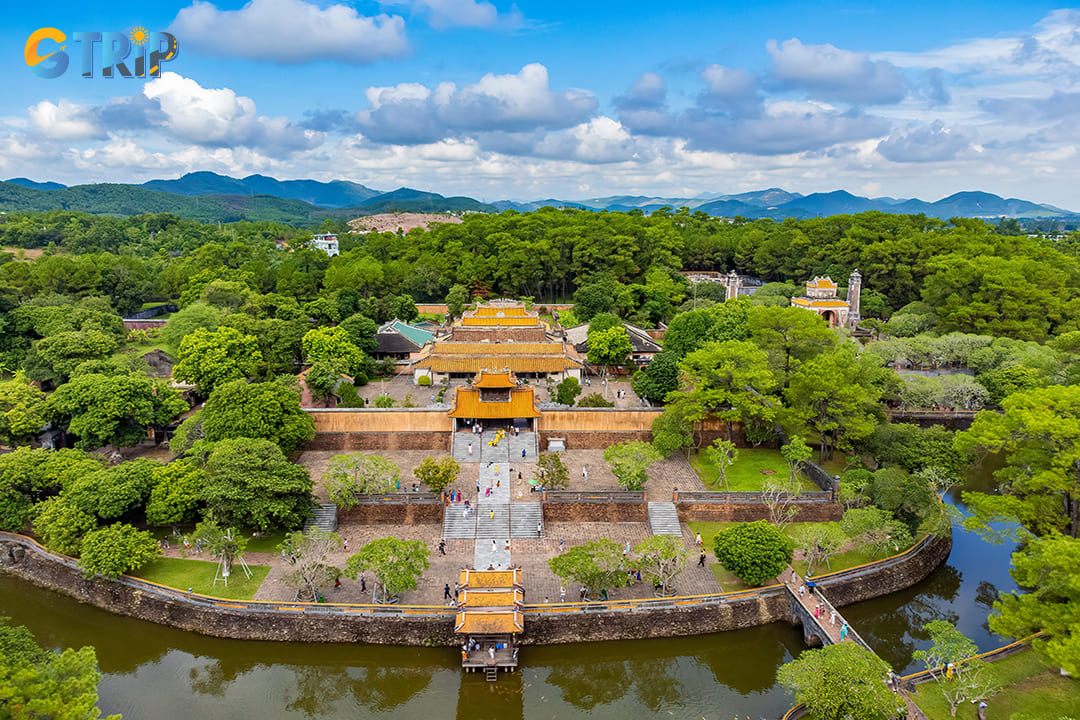
Tu Duc Tomb is a masterpiece of traditional Vietnamese architecture
Tu Duc Tomb stands as a testament to the rich history, intricate tomb architecture in Hue, and the personal legacy of Emperor Tu Duc. As restoration efforts continue to preserve this UNESCO-listed site, you can experience both its historical grandeur and cultural significance. Planning a visit to Tu Duc Tomb offers more than just sightseeing, it’s a journey through Vietnam’s imperial past. To enhance your exploration, consider joining a guided experience with Hue Tours by GTrip - Vietnam Travel Agency, ensuring a deeper understanding of Hue’s most remarkable historical sites.

